| Acorns | |
|---|---|
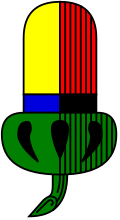 Bavarian pattern Acorn symbol | |
| Native name | German: Eichel |
| Decks | |
| Invented | 15th century |
Acorns (![]() ) (German: German: Eichel, or more unusually Hackl or Ecker) is one of the four playing card suits in a deck of German-suited and Swiss-suited playing cards. This suit was invented in 15th-century German-speaking lands and is a survivor from a large pool of experimental suit signs created to replace the Latin suits. Around 1480, French card makers adapted this sign into clubs in a French deck (known as clovers in France).[1]
) (German: German: Eichel, or more unusually Hackl or Ecker) is one of the four playing card suits in a deck of German-suited and Swiss-suited playing cards. This suit was invented in 15th-century German-speaking lands and is a survivor from a large pool of experimental suit signs created to replace the Latin suits. Around 1480, French card makers adapted this sign into clubs in a French deck (known as clovers in France).[1]
In English, cards are referred to as in a French deck (e.g. the "10 of Acorns"), but in German as Eichel-Zehn.
Acorns are the highest suit in the games of Skat, Schafkopf and Doppelkopf, but the lowest in Préférence. In Watten, the 7 of Acorns (the Spitz or Soach) is the third highest trump card.
Gallery
[edit]German pattern
[edit]The gallery below shows a suit of Acorns from a German-suited deck of 32 cards. The pack is of the Saxonian pattern in which the seeds of the Acorns are red:
-
7
-
8
-
9
-
10
Swiss-German pattern
[edit]The following images depict the suit of Acorns from an 1850 Swiss-suited pack in which the seeds of the Acorns are yellow:
-
6
-
7
-
8
-
9
Individual cards
[edit]The following cards have special powers or names in certain games:
- Ober of Acorns - permanent top trump in Schafkopf, where it is known as the Old Man (der Alte)
- Unter of Acorns - permanent trump in Schafkopf and top trump in Skat.
- Seven of Acorns - one of the top three trumps in games like Watten, where it is called the Spitz ("tip" or "point")
References
[edit]- ^ Dummett, Michael (1980). The Game of Tarot. London: Duckworth. pp. 10–32.


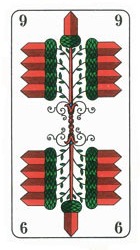


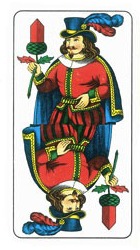
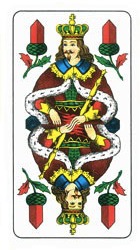
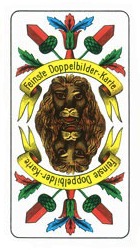









Well, that’s interesting to know that Psilotum nudum are known as whisk ferns. Psilotum nudum is the commoner species of the two. While the P. flaccidum is a rare species and is found in the tropical islands. Both the species are usually epiphytic in habit and grow upon tree ferns. These species may also be terrestrial and grow in humus or in the crevices of the rocks.
View the detailed Guide of Psilotum nudum: Detailed Study Of Psilotum Nudum (Whisk Fern), Classification, Anatomy, Reproduction